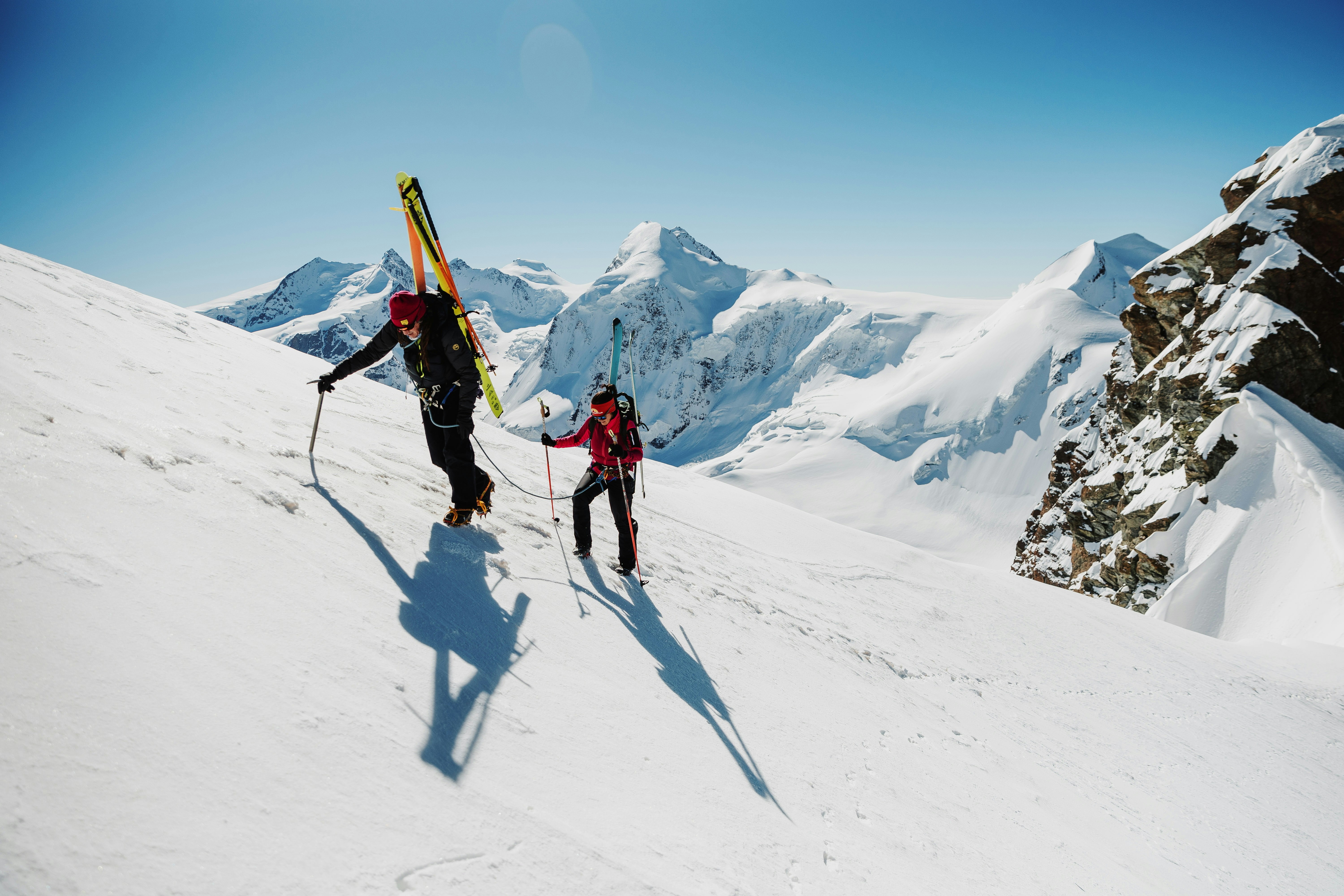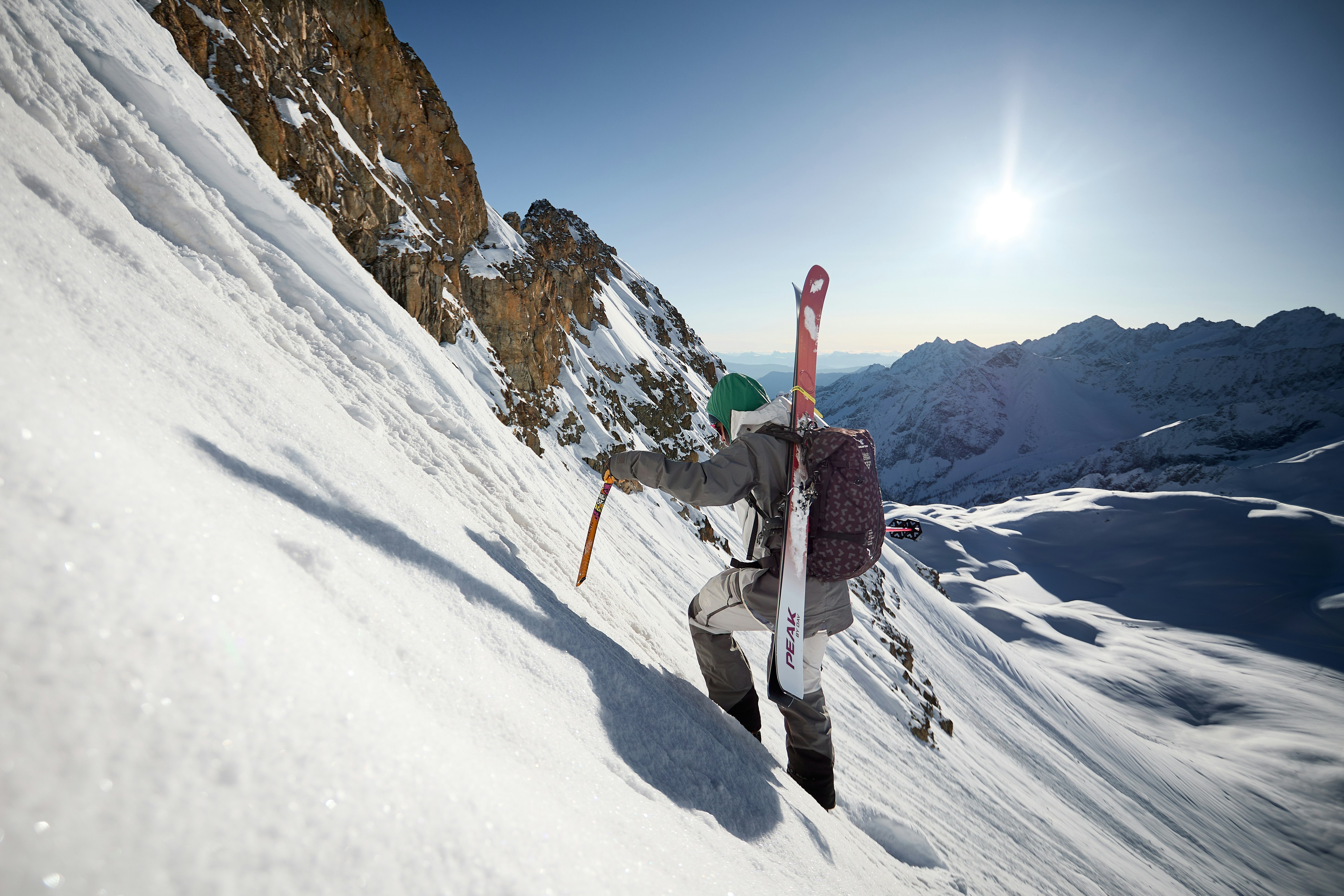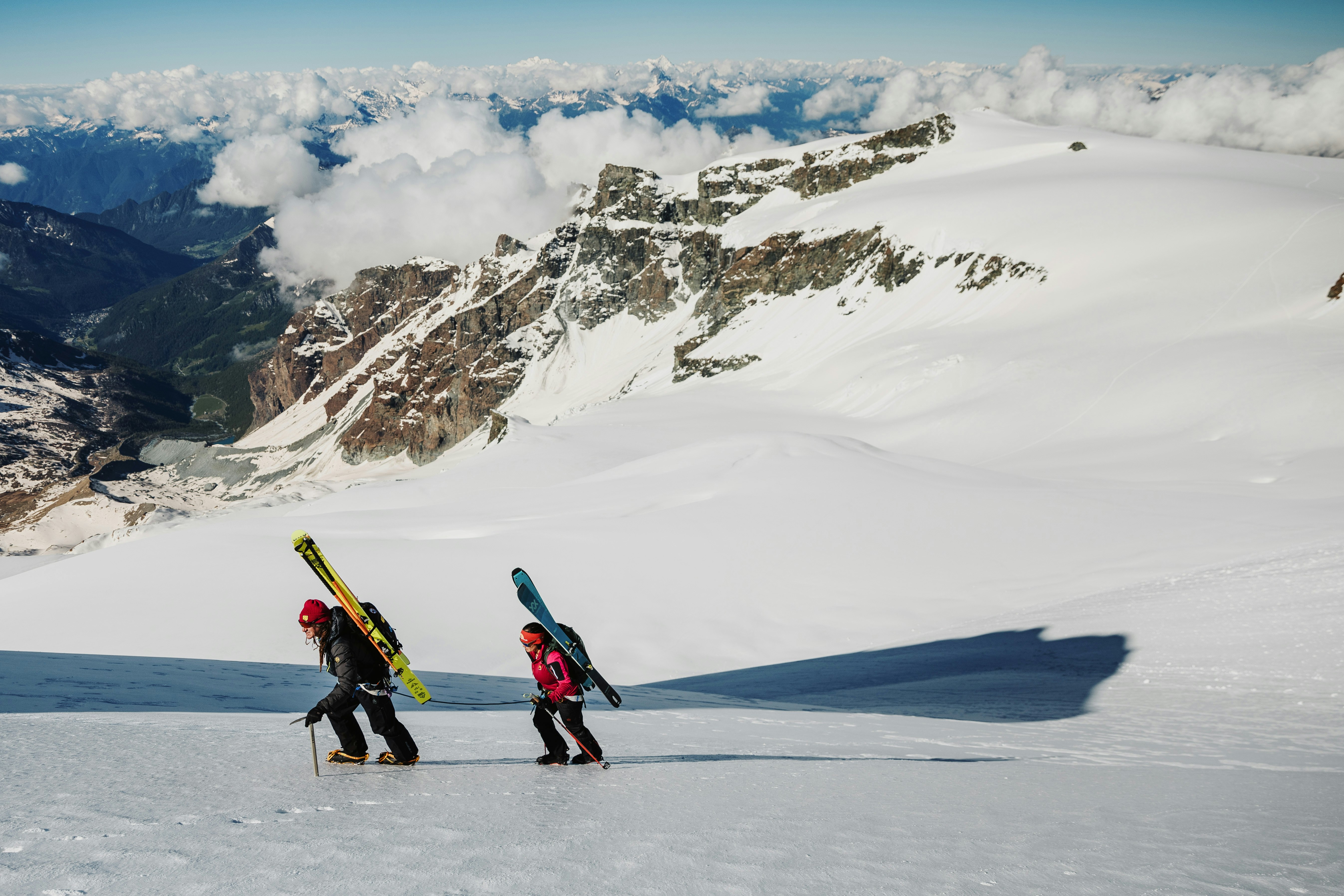Products for mountaineers
Once you’ve chosen your skis, boots and bindings, your thoughts then turn to harnesses, crampons, ice axe and helmet, though perhaps not everyone, and not straight away. While it’s true that when starting out, especially for those transitioning from resort skiing who just want to start surfing some pow, the important thing is to get self-rescue equipment. It’s equally true, however, that the sport we love is a combination of two words: skiing and mountaineering.
- Author: Andrea Bormida
- Photographer: Nicola DamonteGiovanni DanieliAlberto Storti
Snow and wind transform the mountains in winter, and routes that are straightforward on paper become more technical in places. An exposed icy slope or a snowy ridge leading to the summit cross both often call for the expert use of technical equipment like an ice axe and crampons.
This is even more likely in springtime or when embarking on more challenging high-altitude tours in early summer, when the mountaineering aspect of skimo tends to come to the fore. It can be easy to forget that to do this popular sport, you need to not only be a good skier, but also have some mountaineering experience, as the name of the sport itself suggests. Knowing how to climb a steep couloir with hard snow in crampons, and how to move as a rope team, and maybe even set up a belay, are as important skills as being a first-rate skier who can tackle the challenges of a backcountry ski descent. So choosing the right crampons, ice axe and a lightweight harness to take in your pack becomes essential. And the wide range of choices available on the market are a reminder of this.

Crampons
It’s becoming ever more important to carry crampons, due in part to the great variability of conditions in recent years seasons, coupled with the fact that more and more ski tourers are venturing into more remote locations even in our Alps and Apennines.
There are many variables to consider, including the number of points, whether steel or aluminum, what adjustment system to choose. Usually, for dedicated ski touring use, ten-point crampons will suffice, while more classic models have twelve. The lightest versions are solid aluminum, while some products feature a hybrid option, with steel for the front section, and aluminum at the rear). However, we recommend models with a steel front section: on hard snow, icy sections, mixed terrain and all-round versatility, this is essential because aluminum is less durable, tends to deform more, and the points have a harder job penetrating and tend to bounce off ice. So super lightweight versions are better used exclusively on snow—and even, then be aware of their limitations. Anti-balling plates— those rubber inserts designed to stop snow building up in the crampon frame—are an essential safety feature, especially when descending and in heavy snow or when transitioning from warm to cold snow. You also need to evaluate the size and positioning of the rear points: if they're too small and positioned laterally, their grip and braking effect will be significantly reduced, which could make it more challenging descending facing out.

Plus, the market is divided between crampons with either a rigid or flexible connection between the forefoot and heel components: clearly models with a steel shaft offer the best stability, though today’s new generation of crampons that use webbing, such as models designed by Blue Ice, do compare in this respect. Adjustment is a different matter: drilled shafts are quicker, while lightweight systems using webbing or cord require more care and practice. You should test your crampon fit at home before heading out, and try out the tension several times to make sure they can’t detach from your boots. It’s important that once you’ve bought your product, you spend some time familiarizing yourself with how it works and getting the fit right: you don’t want to be fiddling with them in the dark with frozen hands, complaining about how they don’t fit your boots properly. If this is you, it's not the crampon that has the problem. Just saying...

Ice axe
This is an essential tool for negotiating snowy terrain, and not only in mountaineering. In addition to being essential for glacier travel, when climbing a gully or negotiating a steep icy section, it’s also important for keeping ourselves—and indeed all members of a roped party—safe.
So choosing the right product is a decision that shouldn’t be taken lightly. Especially for ski mountaineering, we feel products should have fairly short shafts of between 45 and 50 centimeters, although this means compromising walking comfort slightly. But this also means they can be stowed in your pack when not needed, or tucked under a shoulder strap, where they can be swiftly accessed when necessary. On snow and short sections of bare ice, traditional steel heads with a classic or slightly curved pick are the way to go. Super-light products should be considered above all for skimo racing. On alpine terrain it’s better to go for something slightly heavier—assuming you can find one, as almost everything out there is super light— so you have a tool that won’t let you down when you really need it (on hard snow or ice). For snow use, we recommend a model with an adze, which can be used to prepare a platform for transitioning from skis to crampons, or perhaps for cutting a few steps to overcome hard snow and exposed sections. Even in this case, it’s those small details that can make a big difference: in addition to adze and pick penetration, you need to evaluate the construction of the pick, grip, hand rest (which should be adjustable), the shape of the head and how comfortable it feels in your hand. As a first tool, a light axe will probably suffice, and you won’t even notice it in your pack. But for more versatile use on more technical terrain, best to choose a touring axe or a more aggressive technical lightweight axe.

In ski mountaineering, as in today’s classic mountaineering involving glacier travel or terrain where short roping is standard, lightweight harnesses have become a must.
They take up almost no space in your pack, you can put them on with your skis on without performing a crazy balancing act, and once on, you don't even notice them. Obviously, you have to make some compromises in terms of the size of the gear loops and comfort. On minimalist products, small differences soon add up, since the weights of almost all harnesses in this class are now under 150 grams. Most of all, you need to evaluate the fit, practicality and size of the gear loops, and how to put it on. Consider also that you won’t be using them in front of a warm fire, but most likely by the light of a head torch, with frozen hands and wearing gloves. Well thought-out fit systems and accessible gear loops or a tie-in loop that sits centrally despite the pull of the rope are all factors that can make a difference. A well-designed lightweight harness will also become your go-to for classic mountaineering outings, and when it comes to rappelling, you’ll be happy you chose that one with slightly wider leg loops.
Share this article

